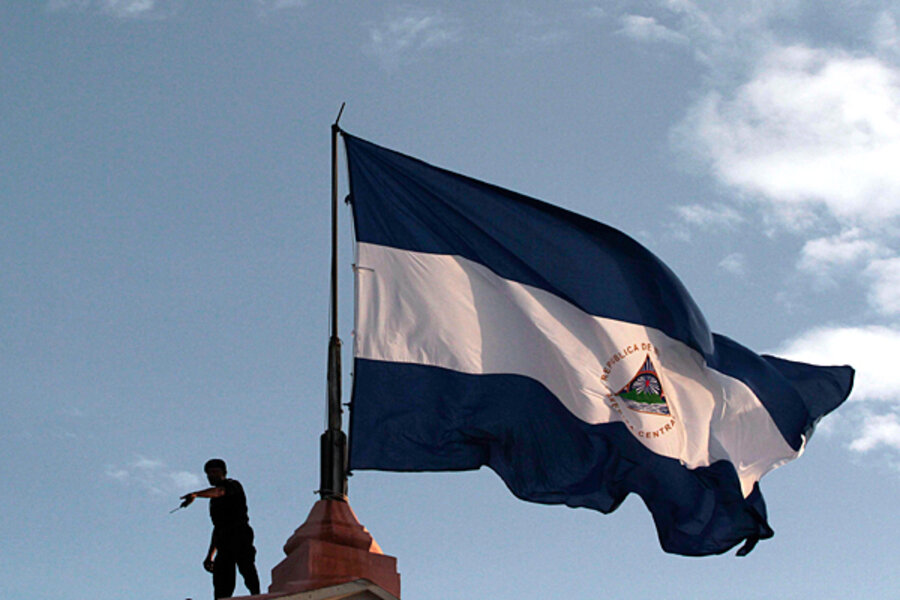Nicaragua: Central Bank says economy up 30 percent under Sandinistas
Loading...
| Managua, Nicaragua
Nicaragua’s economy has grown 30 percent since the Sandinistas returned to power in 2006, according to new numbers published this week by the Nicaraguan Central Bank.
Though Nicaragua’s economy remains the smallest in Central America, it is making up ground on its neighbors thanks to the government’s economic policies and social programs, according to Central Bank President Alberto Guevara.
“The model of economic and social development promoted by Comandante Daniel Ortega Saavedra is working and has the powerful virtue of incorporating people and their own economic initiatives,” Mr. Guevara said.
According to Central Bank, Nicaragua’s Gross Domestic Product (GPD) per capita has grown from $1,239 to $1,582 just in the past year. While that is a notable improvement, it’s not enough to move Nicaragua out of last place in Central America.
Indeed, even with that growth, Nicaragua’s average GDP per capita is still less than half of the Central American average and only about one-sixth of Costa Rica’s GDP per capita ($8,876), according to International Monetary Fund estimates.
Insufficient growth
Independent economist Néstor Avendaño says Nicaragua’s estimated 4.1 percent economic expansion projected for this year is still insufficient to reduce poverty.
“Nicaragua is growing at a good rate, but it is insufficient because we are still very far from the 8 percent or 9 percent growth we need to really start to reduce poverty in Nicaragua,” the economist says.
Mr. Avendaño says economic growth under the Sandinista government has been based mostly on private investment and exports, which have doubled just in the past three years. But 2013 could be a belt-tightening year, he warns.
Avendaño says Nicaragua’s economy next year will most likely experience decelerated growth (around 3.1 percent) and accelerated inflation, due to pending tax reforms that are scheduled to happen in the first quarter of 2013.
“I don’t see any possibilities of us getting above 4 percent growth next year,” the economist says.
Avoiding the 'pinch?'
Not everyone will feel the pinch. According to opposition congressman Carlos Langrand of the National Assembly’s Economic Commission, the ALBA (Bolivarian Alliance for the Americas) business group funded by Venezuelan oil imports and controlled by President Daniel Ortega’s inner circle is doing better than ever.
“From 2007-2011, Venezuelan oil imports by Nicaragua totaled $3.7 billion, 50 percent of which, or $1.86 billion, is used by ALBA for Nicaragua,” the lawmaker told The Nicaragua Dispatch.
That means that the various ALBA businesses have nearly $1.9 billion at their disposal – money the opposition has tried to get the government to include in the national budget.
Unemployment is 'biggest problem'
While the administration spends its Venezuelan oil money how it sees fit, Avendaño argues that the Sandinistas’ poverty reduction efforts is not money well spent.
For instance, he says, the government’s “Christian, Socialist, and Solidarity” cash bonus handout to state workers every month is costing the government $59 million a year, but has not resulted in any increase in production or a single new job.
“If that money were used to generate public works instead of increasing the consumption of public employees, it would create jobs and reduce poverty,” Avendaño says. “Plus, if the aid from Chávez disappears, how are we going to even pay for that bonus?”
The government argues that the cash bonuses are helping Nicaraguan families meet the rising cost of living.
But Nicaragua’s biggest economic challenge, Avendaño says, is unemployment.
“Unemployment is our biggest problem and it is one that has not been improved; it is stagnate, and that is serious problem,” the economist said.
Avendaño says 25 percent of Nicaraguans who are economically active are not able to find jobs to generate an income. Creating jobs should be the focus of the government’s poverty reduction strategy, which has not been made public, the economist says.
“As long as unemployment remains the same, poverty increases,” Avendaño says.
– Tim Rogers is editor of Nicaragua Dispatch







